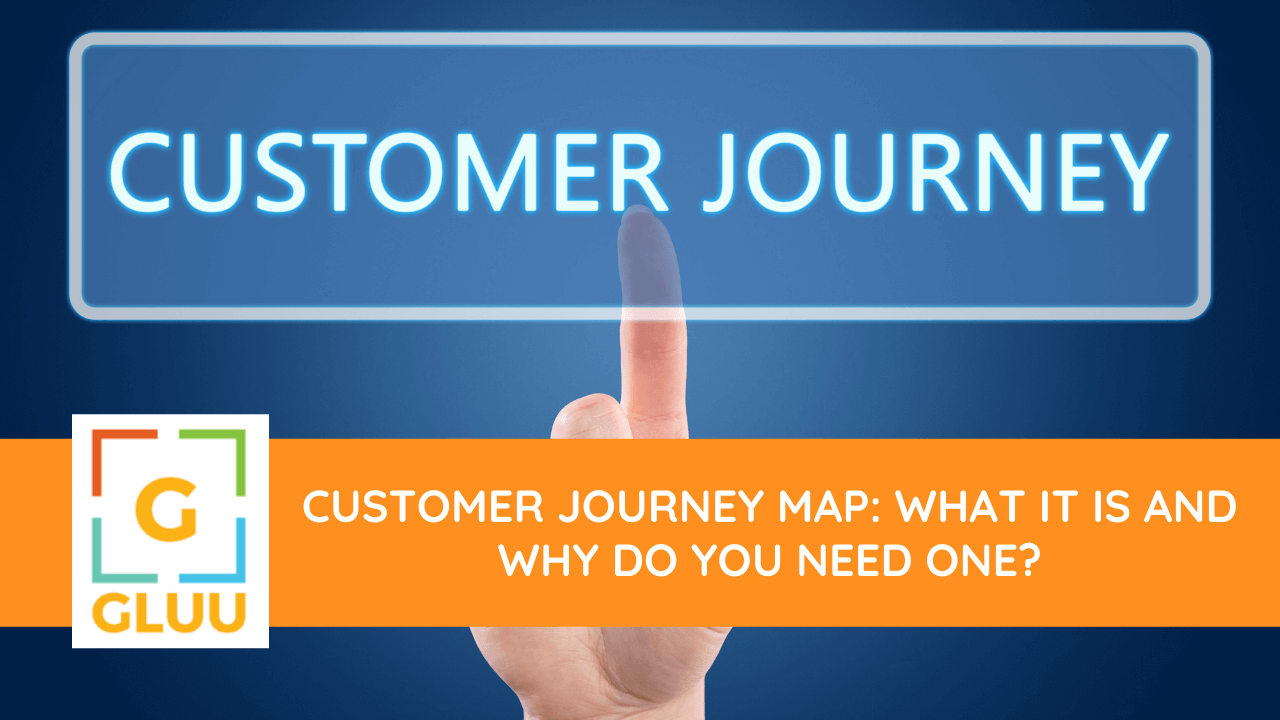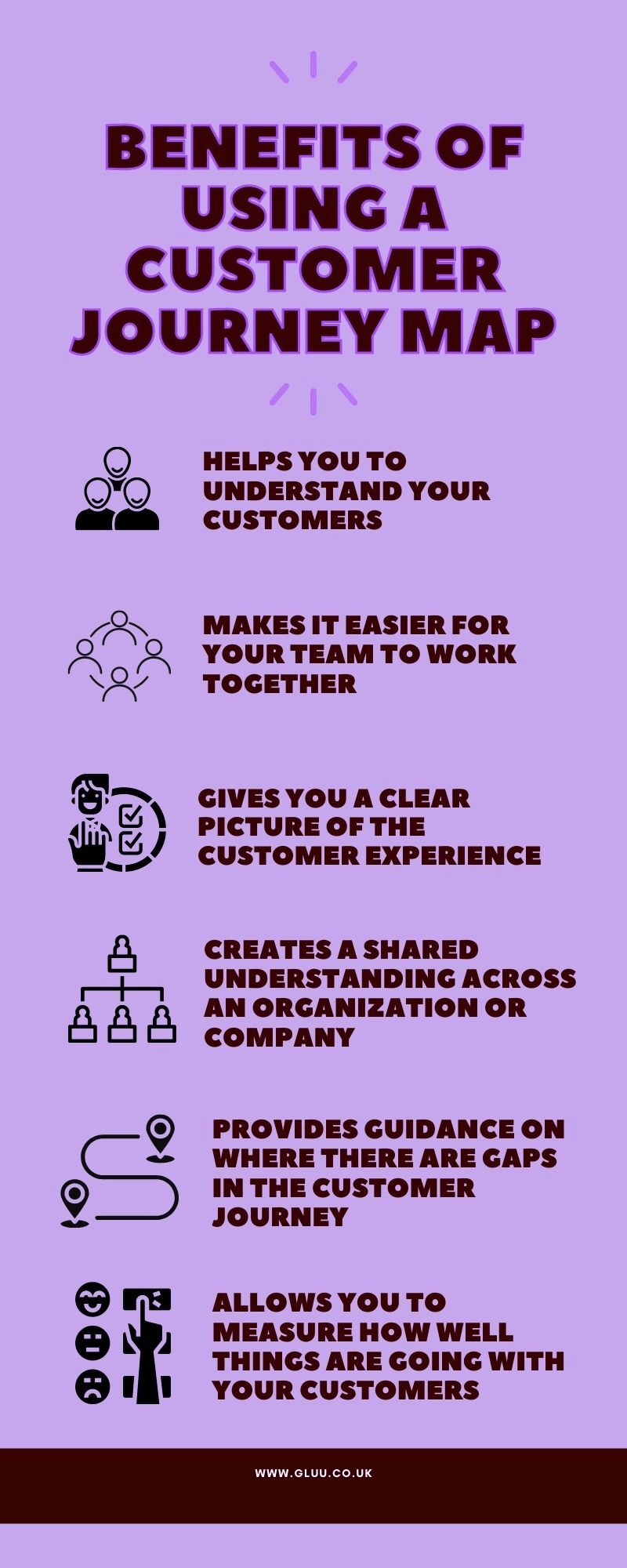A customer journey is the progression of a customer through their life cycle with your company. It can be seen as exploring what we can offer and how we might engage with them, to make the best possible impression and create a point of differentiation.
What happens at each stage of the customer journey determines if they will find our brand appealing or not. If they enjoy any part of the process (for example social interaction) there is a higher chance that they will engage further with us on those same channels, building up their level of interest towards becoming an advocate for our company.

As per a PWC report, 82% of companies admitted that their main reason for earning profits and leads is by giving personalised human touch throughout a customer’s purchasing cycle.
On the other hand, if something during their process was less than excellent (ie: poor content), then it's likely that person won't want to continue engaging more.
In this blog, we’ll talk about:
A customer journey map is a graphical representation of the product or service that reflects how customers move through the typical customer experience. It helps provide clarity on how you need to prioritise and address your digital priorities within your organisation.
If an organisation's objective is to increase online conversions, then it might be beneficial for them to focus more resources on refining their products' usability and reducing friction during the checkout process before eliminating some features entirely.
Customer touchpoints are the moments when a customer is interacting with a product, service, or brand. Touchpoints showcase how a company thinks about the customer experience and whether they have an in-depth understanding of customer needs.
Every interaction counts when it comes to fostering positive or negative feelings in customers. It's also important to remember that in today's digital economy touchpoints aren't just in person; they could be in your inbox, on your social media feed, on a video you saw from another customer that pushed you over the edge into making a purchase decision.
Touchpoints can happen anywhere and it's up to us designers and marketers to think critically about any point where an experience might leave somebody feeling good or bad.
Understanding the customer journey is crucial to driving meaningful business outcomes. For example, understanding where customers get hung up in an interaction, their touchpoints with the company and the moments of friction that slow them down or turn them off, can lead to insights into how to provide better customer service.
With more information on what's happening at different stages of outbound communications (calls, emails), there is a more complete picture of your current state when addressing gaps in communication performance.

The process can be long or short depending on how many interactions there are in each step. But no matter what size business you have, mapping out your customer journey will help you understand where to focus your marketing efforts.
The best way to make sure your business is always successful and profitable, it's important that you know who or what customers will be coming in. For this reason, many businesses create a persona for each individual client so they can tailor services specifically towards them!
One way in which we can find out more information on people with similar interests as ours (and hopefully buy from them) would be through studies involving surveys or questionnaires.
Identify the various ways clients can be reached and how they might interact, what information is offered at each point of interaction on their path towards becoming loyal buyers for life!
Are there points of friction where customers could get confused with your brand? Is it hard for them to navigate the website and find what they need, or does something about how you advertise to make people feel uncomfortable? These might not seem like problems at first but if we look closely then any point may actually represent multiple frustrations in a single experience!
Excel is a wonderful tool for organising and summarising data, which you can put on your map. There are also templates available in the form of workable Excel documents to help us get started with our project right away!
Nowadays, people don't just buy something once; they engage over email campaigns before making purchases online so it's important for marketers like yourself not only to understand where buyers can go wrong but also how best to provide solutions too!
As per Microsoft research, 52% of people all over the world believe that companies should focus on feedback given by their customers more.
Data insights drawn from survey responses collected via opt-in forms allow firms such opportunities: understanding problems quantitatively rather than anecdotally through qualitative methods alone permits better risk management.
NPS, CSAT, and CES are acronyms for short surveys used by businesses to collect client feedback to help quantify the success of their company.
The process of designing customer journeys maps typically involves several steps including researching your target audience; determining where our clients currently stand within the industry or marketplace as well as which products best fit those preferences based on prior purchases/experiences with other brands; identifying pain points leading users towards purchasing certain items from others and by interviewing/surveying people. Once all data has been compiled together in one place through extensive research, you get a customer journey map.
To do this, you need to be sure that each stage of the journey includes enough information for customers at different levels on the funnel.
If you want help with this type of strategy, let us know!
Our team has been helping companies create successful marketing strategies for years and we would love to work with you too.
Phone: 020 3500 2602
Email Id: info@gluu.co.uk